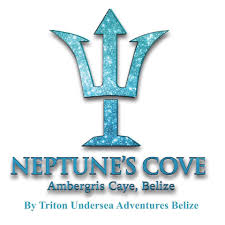|
Every country in the world has dangerous animals, and Belize is no exception. Most of you, will never encounter many of these critters on your vacation. None-the-less, it's still interesting to read about them and the role they play in the Belize eco-system. Belize is home of many dangerous creatures. Smaller animals can actually be more of a threat to humans than larger animals. To compensate for their size, nature has given many small animals weapons such as fangs and stingers to defend themselves. These are the animals you are more likely to meet as you unwittingly move into their habitat, or they slip into your environment unnoticed. ON LAND BULLET ANTS Bullet Ant - Also known by locals as the "24 hour ant". From the moment you are bitten, you will "waves of burning, throbbing, all-consuming pain, that continues unabated for up to 24 hours. Bullet ants are named after this powerful and potent sting, which is said to be as painful as being shot with a bullet. Worker ants are 18-25 mm long and look like stout, reddish-black, wingless wasps. Certainly not something to mess around with. The pain caused by this ant is greater than any other ant species, and is ranked as the most painful. BLACK WIDOW SPIDER Black Widow Spider - Black Widow Spiders are extremely poisonous arachnids (not insects). Their venom is 15 times as poisonous as the venom of the prairie rattlesnake. These venomous spiders are found in warm and temperate climates all around the world. They live in dark places, in drain pipes, under logs and rocks. The Black widow spider is one of the most poisonous and dangerous spiders in North & Central America. They are usually identified by their black color and red marking on the underside of their abdomen, also called the opisthosoma. This red marking is usually shaped like an hour glass. What do they look like? - The female black widow spider is darker and larger than the male. Where the female is usually dark black, the male is often dark brown and doesn't have as bright red of an hour glass shape on the abdomen. The female can grow to about ½ an inch long body and 1 ½ inch leg span. The male black widow is typically around the half the size of the female. How poisonous are they? - The black widow spider is the most poisonous spider in North America. The male and young black widows are generally not considered dangerous to humans. Upon getting bitten by a black widow, you should seek medical attention immediately. If you can catch the spider, it will be helpful in identifying the type of spider and potential medical remedies. If you see a black widow, do not play with it. Tell your parents or your teacher immediately. Where do they live? - The female black widow spider generally builds her webs low to the ground. Once she finds a good spot and builds her web, she will often stay in or around her web for the majority of the time. Most of the time she will hang belly up within her web, making identification of the hour glass mark easier. This also warns off predators, which will recognize the bright color and not want to eat her. Even though eating a poisonous spider might not kill a predator, like a bird, it can make them sick. Fun Facts About the Black Widow Spider
BROWN RECLUSE SPIDER Brown Recluse Spider - Also known as the Fiddleback Spider. Brown Recluse Spiders are shy and nonaggressive, but they have a powerful poison. They usually only bite when pressed against the skin, such as when tangled up within clothes, bath towels, or in bedding. Occasional bites happen because people and brown recluses often share the same living space. These spiders like dark corners and places inside the house, and also live under furniture, boxes and books. A minority of brown recluse spider bites form a necrotizing ulcer that destroys soft tissue and may take months to heal, leaving deep scars. The damaged tissue will become gangrenous and eventually slough away. The initial bite frequently cannot be felt and there may be no pain, but over time the wound may grow to as large as 10 inches (25 cm) in extreme cases. Bites usually become painful and itchy within 2 to 8 hours; pain and other local effects worsen 12 to 36 hours after the bite with the necrosis developing over the next few day. Fun Facts About the Brown Recluse Spider
DART FROGS 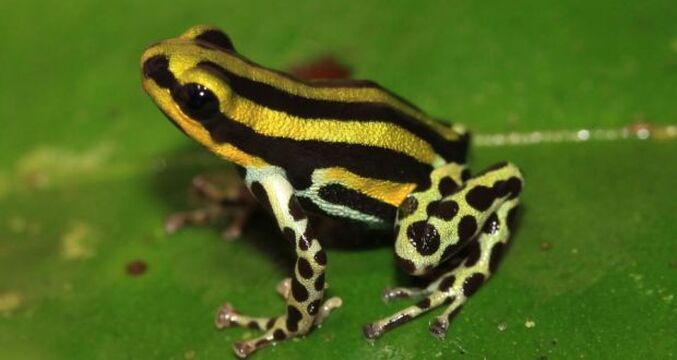 Dart Frog - There are over 170 species and 13 genera of poison dart frogs. Although collectively known as "poison dart frogs," only four species were documented as being poisonous. The bright coloration of the poison dart frog serves as a warning to potential predators that it is one of the most poisonous animals on earth. Most poison dart frogs have brightly colored skin which is used as a warning sign to predators. These frogs are very small. Adult frogs range from half an inch to just under two and a half inches in length, weighing one ounce. From tiny pores in its skin, the frog secretes a defensive toxin that makes it unpalatable to curious predators and which could easily kill if injected into a human or other animal. "Even a very small amount of the poison found on the skin of the Golden Poison Dart Frog can be fatal". Poison dart frogs live in the tropical and subtropical rainforests and wetlands of Central and South America. They are found in Costa Rica, Panama, Nicaragua, Suriname, French Guiana, Bolivia, Colombia, Ecuador, Venezuela, Brazil, Guyana, and Brazil. The frogs have been introduced into Hawaii. Fast Facts About Poison Dart Frogs
BATS True Vampire Bats only Found in Central & South America Bats - There are many bat varieties worldwide, but you find the true vampire bats only in Central and South America. They are small, agile fliers that land on their sleeping victims, mostly cows and horses at night to lick the blood after biting their victim. There are three species of vampire bats:
If there is fur on the skin, the Common Vampire Bat uses its canine and cheek teeth like a barber’s shears to clip away the hairs. The bat’s razor-sharp upper incisor teeth lack enamel, making it easier to keep them razor sharp, and are used to make a quick cut, leaving a wound approximately 5 mm deep and 5 mm in diameter without cutting arteries or veins. If you made a wound this size on your body, it would produce about one drop of blood or less than a gram. The bat then begins to use its tongue in the wound as well as its saliva. The action of the tongue keeps blood flowing, while grooves on the underside of the tongue draw blood toward the bat’s mouth. Meanwhile, the saliva has at least three active ingredients that promote bleeding. One is an anticoagulant that counters the clotting defenses. A second keeps red blood cells from sticking together and a third inhibits the constriction of veins near the wound. It may take the bat about 20 minutes to take its fill, it is then time to take off and return to its roost. Inside the bat’s stomach the lining rapidly absorbs the blood plasma. In turn, the circulatory system shunts the plasma to the kidneys. From there it passes to the bladder and out of the bat. Within two minutes of beginning to feed, a Common Vampire Bat begins to urinate. The urine is very dilute—no wonder, it is the plasma from the blood meal. The plasma is heavy but contains no nutritive value, so the bat benefits from leaving it behind. Shedding the plasma makes taking off from the ground easier. But the bat still has added almost 60% of its body weight in blood. Usually within two hours of setting out, the Common Vampire Bat returns to its roost and settles down to spend the rest of the night digesting its blood meal. Each vampire bat needs about two tablespoonful of blood every day. This represents about 60% of the bat’s body weight, or 20g of blood. It appears that vampire bats are “one stop shoppers,” feeding on one victim each night. To obtain this amount of blood each night, a vampire bat will typically prey on only larger animals. Common Vampire Bats usually roost in hollows, so they may be found in caves, hollow trees and buildings. They live together in structured societies that provide a network of social support. Colonies of Common Vampire Bats usually include one adult male with several females and their young. The bats may not all roost together at any one time, for they move between several roosts within the home range of the colony. Females that roost together often forage in the same general area. When a Common Vampire Bat returns to the roost they often meet face-to-face and groom one another. A bat that fails to feed uses this face- to-face contact to beg blood from a roost-mate. The successful bat may then regurgitate some blood to the unsuccessful one. BEES, WASPS, HORNETS Bees, Wasps, and Hornets - We are all familiar with bees, wasps, and hornets. They come in many varieties and have a wide diversity of habits and habitats. Avoidance is the best tactic for self-protection. Watch out for flowers or fruit where bees may be feeding. Nearly all honeybees in Belize are now Africanized, except the native sting-less bee. CENTIPEDES & MILLIPEDES Centipedes and Millipedes - Centipedes and millipedes are mostly small and harmless. A few varieties of centipedes have a poisonous bite, but infection is the greatest danger, as their sharp claws dig in and puncture the skin. To prevent skin punctures, brush them off in the direction they are traveling, if you find them crawling on your skin SCORPIONS, TARANTULAS Scorpions - You can find scorpions on the Cayes and in on the Mainland. They are mostly nocturnal in habit. Fatalities from scorpion stings are rare, but they can occur in children, the elderly, and ill persons. In environments known to have spiders and scorpions, check your foot gear and clothing every morning. Also check your bedding and shelter for them. Use care when turning over rocks and logs. Tarantulas - Tarantulas are large, hairy spiders, best known because they are often sold in pet stores. The bite of a tarantula is said to be painful but not dangerous unless you are allergic to the venom. If you are bitten by a tarantula and begin to experience tightness in the chest and shortness of breath, going to a hospital emergency room would be a good idea. SNAKES IN BELIZE Among the 56+ species of snakes found in Belize, we could only find 8 that were considered dangerous to humans. 8 Venomous Snakes in Belize
IF BITE BY A SNAKE - "DO NOT"
CENTRAL AMERICAN - CORAL SNAKE Central American Coral Snake - The two species of coral snakes found in Belize have brightly colored bands of red, yellow and black. These bands are in sequence of yellow, red, yellow, black, yellow, red, yellow. Maximum length of these snakes rarely exceeds three feet. They have short, fixed front fangs. Coral snakes are usually found seeking refuge under rotten logs, thick leaf litter, decomposing vegetation, and rocks. This species of coral snake is found countrywide, in both northern and southern hardwood forests, including the Mountain Pine Ridge. Although coral snakes feed primarily on other snakes, lizards and frogs are also included in their diet. Coral snakes are considered to be mild-tempered, however, extreme caution should be shown around coral snakes, as their bite can be fatal. They have very strong neurotoxic venom. When threatened, coral snakes immediately burrow into nearby vegetation to escape, but are sometimes noted to flatten their body to appear larger (defensive posture). They are primarily nocturnal, but are often sighted at dusk and dawn. Coral snakes are preyed upon by birds of prey and other snakes (kingsnake, mussarana). EYELASH PALM PITVIPER Eyelash Palm Pitviper - The eyelash viper is a beautiful pit-viper which is uniquely camouflaged. Eyelash vipers blend in the moss often found on trees in a humid forest. Their overall body color is green, with irregular blotches of brown, yellow, and white. They have a pair of large, rotatable fangs situated at the front of the maxillary bone. Eyelash vipers have a typical viper-shaped head, and a pair of facial pits or heat-sensing organs. They have two pronounced tubercles over the yes, which gives an "eyelash" appearance. Their tail is prehensile. The eyelash viper has been recorded in Orange Walk and Cayo districts (northern hardwood forests), but is seldom seen, most likely due to its arboreal habits. Eyelash vipers feed largely on birds and rodents, but have been known to include bats in their diet. They have strong hemotoxic venom. Not an aggressive snake, but it will not hesitate to bite if threatened. Eyelash vipers spend most of their time in trees, rarely coming to the ground. FER-DE-LANCE
JUMPING PITVIPER Jumping Pitviper - Color variation in jumping vipers is not uncommon, however, the pattern of adjoining saddles down entire dorsal surface of the body is consistent. Maximum length rarely exceeds four feet. Jumping vipers have a pair of large, rotatable fangs situated at the front of the mouth on the maxillary bone. Other distinguishing characteristics include vertically elliptical pupils and a pair of heat-sensing organs. Found primarily in the high elevations of Belize's southern hardwood forests. Sometimes found at the mouth of caves, where they may seek refuge. Jumping vipers prey on rodents, birds, frogs and lizards. They have a strong, meotoxic venom. This species is a mild-tempered snake, compared to some of the other pit vipers. A bite, however, may result in extreme pain and severe haemorrhagng, causing death. Jumping vipers are primarily nocturnal, although they are sometimes seen in the early mornings, basking in the sun. Females are ovoviviparous. Although called Jumping Viper or Jumping Tommygoff, these snakes don't actually jump but will strike throwing themselves backwards to appearing leap from the ground. Most snakes are only capable of striking a third of their body length. MAYAN CORAL SNAKE Mayan Coral Snake - This coral snake has large red bands with small yellow bands and small black bands. Its colors are brilliant, with a sequence of red, yellow and black; the red bands always in contact with the yellow bands. Its head is yellow and black. The maximum length odes not exceed three feet. The fangs of this snake are short and permanently fixed at the front of the maxillary bone. Known only to be found in the southern hardwood forests of the country, in areas of thick leaf litter. It prefers humid forests. Micrurus hippocrepis, like most coral snakes, feeds primarily on other snakes, but will include lizards in its diet. They have strong neurotoxic venom that is dangerous to humans. This snake is terrestrial and sub-terrestrial. It is primarily nocturnal, but is often active at dusk and dawn. Females are oviparous. MEXICAN CANTIL MOCCASIN SNAKE Mexican Cantil Moccasin - The Mexican Moccasin is brown in color, with irregular blotches of white down the entire dorsal surface of the body. Tail varies in color, from a pale white to yellow. Maximum length does not exceed three feet. Cantils have a pair of large, rotatable fangs, located at the front of the mouth on the maxillary bone. The tongue is reddish in color. They have a typical viper-shaped head, with vertically elliptical pupils, and a pair of heat-sensing organs, or facial pits. The Mexican Moccasin has been recorded only from the Corozal and Orange Walk districts, in the northern hardwood forests of Belize. The Mexican Moccasin juvenile uses its sem-prehensile tail to mimic a worm, in order to lure in frogs or lizards. Their diet includes frogs, lizards, rodents and birds. Cantils have a strong, fast-acting hemotoxic venom. Like all members of the genus, female Mexican Moccasins are ovoviviparous. NEOTROPICAL RATTLESNAKE Central American Rattlesnake - The Central American rattlesnake is distinguished by a black diamond down the dorsal body surface, fading towards the tail. The overall body color is brown to gray. Maximum length does not exceed six feet. Rattlesnakes have a pair of rotatable fangs that are situated at the front, on the maxillary bone. Other distinguishing characteristics include vertically elliptical pupils, a pair of heat-sensing organs, and a rattle at the end of the tail. Found countrywide in both northern and southern hardwood forests, including the Mountain Pine Ridge. Tropical rattlesnakes are particularly abundant in the pine savannas and grasslands of Belize. Central American rattlesnakes are primarily nocturnal predators, feeding largely on rodents and birds. The venom of this rattlesnake has high concentrations of hemotoxins and nurotoxins. Tropical rattlesnakes are not particularly aggressive but will rattle and coil to strike if threatened. Femals are ovoviviparous. HOGNOSED PITVIPER Hognosed Pitviper - The hognose viper is dark to reddish-brown in color, and pattrened with a narrow cream mid-dorsal stripe, flanked on either side by small, square brown or black markings. It is also recognized by a conspicuous upturned snout. Pupils are vertically elliptical, and the presence of a pair of large rotatable front fangs, as well as a pair of heat-sensing organs, characterizes this unique pit-viper. Maximum length rarely exceeds two feet. Found in the humid hardwood forests of southern Belize. It prefers areas of open forests with fallen logs and leaf litter. It is also seen around temple ruins. Hognose vipers prey on small rodents, lizards and frogs that are quickly subdued by their strong meotoxic venom. Although primarily nocturnal, these snakes can also be active during the day, depending on climatic conditions. Females of this species are ovoviviparous. IN THE WATER BULL SHARKS There are more than 360 species of sharks in the world's oceans and Belize is home to a few of these. Among the sharks seen diving are: black tip shark, bull shark, lemon shark, nurse shark, reef shark, and occasionally a hammerhead shark. The whale shark is migratory and usually only see in the Spring of each year in and around the waters off of Placencia. If you see a shark in the water, chances are it's a bull shark. Bull sharks are so named because of their thick, stout body and short, blunt snout which gives them an appearance of a bull. Bull sharks are medium-sized sharks that can grow up to 11 feet long and weigh about 700 pounds, although females generally top out at 5 feet and males usually at 7 feet. They are gray on top and white on bottom, so they camouflage against the dark depths when prey is above them, and they blend in to the lighter surface when prey is below them. The first dorsal fin is larger than the second one and is angled rearward. The caudal fin is lower and longer than that of other sharks. There has not been any shark attacks off Ambergris Caye for a good long while now. Interesting Facts About Bull Sharks:
TIGER SHARKS The Tiger Shark is one of the shark species which can be aggressive, and is considered dangerous for that reason. Tiger Shark are known by locals as "Sea Tigers". Tiger sharks are among the largest species of sharks, both in length and weight. Females are larger than males at maturity. Tiger sharks average 10 to 14 feet in length, but the largest individuals may be as long as 18 feet and weigh over 1,400 pounds. The tiger shark is mostly a nocturnal hunter. Its diet includes a good kind of prey, starting from crustaceans, fish, seals, birds, squid, turtles, and ocean snakes; to dolphins and even different smaller sharks. What Do Tiger Sharks Look Like? - The tiger shark is named for the dark, vertical stripes on either side of its body, which are reminiscent of a tiger's markings. These stripes actually fade as the tiger shark ages, so they can't be used as an identifying feature of every individual. Young tiger sharks have dark blotches or spots, which eventually merge into stripes. For this reason, the species is sometimes known as the leopard shark or the spotted shark. The tiger shark has a stout head and body, although narrower at the tail end. The snout is blunt and somewhat rounded. AMERICAN CROCODILE Crocodiles are clearly ferocious hunters, but they are opportunistic predators. Any animal that moves is fair game, and can be considered as prey. Most of the larger crocodiles on the island have been relocated to habitats which do not interact with humans. Occasionally these crocodiles can creep down into shorelines inhabited by humans. Crocodiles prefer murky water with mangroves (as their habitat of choice), primarily so they can remain unseen. Crocodiles are ambush predators, which mean they wait for prey to get close enough to them, before they attack. The average lifespan of a crocodile is 70 years in the wild and can be found on land and in water. HOW TO AVOID A CROCODILE ATTACK - 10 Things You Need to Know 1. Stay away from water with crocodiles or alligators in - Ask local residents about where crocodiles or alligators live in lakes and rivers, and don't go swimming outside of designated areas. Do not go in murky water, or swim at dusk or at night, when the animals hunt and are harder to see. 2. Be aware of your surroundings -If you're going to be in or around water where they live, you must remain on your guard. Alligators and crocodiles can hide themselves very well in water, often keeping only their eyes and nostrils above water or submerging entirely. Do not dangle arms or legs off a boat into the water, don't walk too close to rivers or lakes, and avoid thick vegetation that provides these animals with good cover. 3. Stay at least fifteen feet away from alligators or crocodiles - Once you've spotted them, give crocodilians a wide berth. Fifteen feet is usually ample on land, but during mating season, or when near babies, it's a good idea to stay even farther away. Crocodilians are surprisingly fast - especially in water - so stay as far away as possible. 4. Don't get too comfortable in your camp - Crocs and alligators can memorise people's habits and campsite layouts - so be very wary when you're camping near water. Set up camp well away from the water's edge, and do not litter the area with food scraps. If you have to use the water for washing, try not to use the same path every time. 5. Avoid surprising the animals - If you see you're going to come anywhere close to a crocodilian, make noise by slapping the water with your oars or whistling. Stay away from riverbanks when coming around bends in a river, and make your presence known. Crocodiles or alligators basking on the shore may attack in self-defense if you surprise them. 6. Let it know you're watching it - If there's a croc or alligator on land, let it know that you're watching it. From a safe distance, stare at it and never take your eyes off of it - it may be intimidated and not come any closer. 7. Run - Crocodilians rely on the element of surprise to capture prey, so it's extremely unusual for one to pursue a person on land. The land speed record for a crocodilian is about 10 miles per hour, and they quickly grow tired - so a fit person should be able to outrun it without too much difficulty. Run away from the water, as they will be trying to get back to where they feel safest. 8. If attacked, get away - Sometimes, the animal will deliver a single, quick defensive bite and then immediately let go. If this occurs, just try to get away from the animal as quickly as possible. However, sometimes the animal doesn't let go and will often try to drag a person into the water or underwater. Crocodilians can stay underwater for much longer than humans can, so the only hope of survival if you're attacked in this manner is to fight back and get away. 9. Go for the eyes, nostrils, or throat - The most vulnerable part of a crocodile's or alligator's body is its eyes. Try to hit or poke the eyes with whatever you have handy: an oar, a stick, or a knife - even your hands. While not as sensitive as the eyes, the nostrils and ears can also be effectively attacked. A hard blow or a cut to either of these areas may cause the animal to release you. Crocodilians have a flap of tissue behind the tongue that covers their throats when they submerge in water. This flap prevents water from flowing into their throats and stops the crocodile from drowning when its mouth is open. If your arm or leg is stuck in a crocodile's mouth, you may be able to pry this valve down. Water will then flow into the crocodile's throat, and animal will most likely let you go. 10. Get medical attention promptly - A crocodilian's mouth is home to millions of bacteria, and infection is almost guaranteed if a bite is not treated promptly. CONE SHELLS Cone shell snail venoms contain many different toxins that vary in their effects; some are extremely toxic. The sting of small cones is no worse than a bee sting, but the sting of a few of the larger species of tropical cone snails can be serious, occasionally even fatal to humans. Symptoms can begin within minutes or take days to appear. Severe cases of cone shell snail stings involve muscle paralysis, blurred/double vision, and respiratory paralysis, leading to death. Do not eat these snails, as their flesh is poisonous. Cone Shell Snails These cone-shaped shells have smooth, colorful mottling and long, narrow openings in the base of the shell. They live under rocks, in crevices and coral reefs, and along rocky shores and protected bays in tropical areas. All have tiny teeth that are similar to hypodermic needles. Avoid any shell shaped like an ice cream cone. They can inject an extremely poisonous venom that acts very swiftly, causing acute pain, swelling, paralysis, blindness, and possible death within hours. Avoid handling all cone shells. Three species that are known killers are the Geographic Cone (Conus geo- graphus) the Textile Cone (Conus textile), and the Tulip Cone (Conus tulipus) though around twenty cones are known to be dangerous to humans. Cone shell snail stings: Symptoms include intense pain, numbness, and tingling. Symptoms can begin within minutes or take days to appear. Severe cases of cone shell snail stings involve muscle paralysis, blurred/double vision, and respiratory paralysis, leading to death. Do not eat these snails, as their flesh is poisonous. Auger Cone Shells The Auger Shells or Terebra, are similar to cone shells but much thinner and longer. They are poisonous in the same way as cone shells, but their venom is not as poisonouss as some cones. The venom is powerful enough to be lethal to collectors who are not careful in handling the mollusc. World-wide, there are about 300 species of auger shells. The species most dangerous to humans are the larger cones, which prey on small bottom-dwelling fish. Cone snails use a hyperdermic needle-like modified radula tooth and a venom gland to attack and paralyze their prey before engulfing it. The tooth, which is sometimes likened to a dart or a harpoon, is barbed and can be extended some distance out from the head of the snail. Cone shell snail venoms contain many different toxins that vary in their effects; some are extremely toxic. The sting of small cones is no worse than a bee sting, but the sting of a few of the larger species of tropical cone snails can be serious, occasionally even fatal to humans. Symptoms can begin within minutes or take days to appear. Severe cases of cone shell snail stings involve muscle paralysis, blurred/double vision, and respiratory paralysis, leading to death. Do not eat these snails, as their flesh is poisonous. FIRE CORAL Fire Coral Fire corals have a bright yellow-green and brown skeletal covering and are widely distributed in tropical and subtropical waters in Belize. They appear in small brush-like growths on rocks and coral. Divers often mistake fire coral for seaweed, and accidental contact is common. Fire coral is actually a marine colony of organisms, that look like real coral. However they are technically not corals; they are actually more closely related to jellyfish and other stinging anemones. The very small nematocysts on fire corals contain tentacles that protrude from numerous surface pores (similar to Jelly Fish stings). Fire corals have a sharp, calcified external skeleton that can scrape the skin. INTERESTING FIRE CORAL FACTS
The following guidelines are suggested to treat fire coral cuts:
When Should I Call the Doctor About Fire Coral Cuts and Stings?
PORTUGUESE MAN-OF-WAR Portuguese man on war Although it resembles a jellyfish, the Portuguese man-of-war is actually a colony of sea animals. Mainly found in tropical regions, such as Belize. The Portuguese man-of-war resembles a large pink or purple balloon floating on the sea. The floating portion of the man-of-war may be as small as 15 centimeters, but the tentacles can reach nearly 165 feet in length. The huge tentacles are actually colonies of stinging cells. These tentacles inflict a painful and incapacitating sting, but the sting is rarely fatal. How to Avoid Being Stung by a Portuguese Man-of-War Portuguese Man-of-War creatures regularly make appearances on Spanish beaches. The man o'war (is not a jellyfish), but a floating colony of microscopic hydrozoans - has tentacles that can reach 30 yards long and are barbed with a sting that typically cause painful welts lasting up to three days. In some cases the sting can cause an allergic reaction and in rare cases, heart failure. Even when washed up on the sand the stings still contain venom. Rule No. 1: Don't touch it Man-of-war fish have stinging cells that are still active and capable of stinging even after the creature is dead and washed up on shore. So don't touch it. Rule No 2: Listen to lifeguards If the red flag is raised then don't go into the water. If you break that rule you may face a fine or even be stung by one of the creatures lifeguards are trying to protect you from. If you are in the water then you may be stung without even seeing the culprit. The Man-of-war looks like a floating blue plastic bag but they have practically invisible tentacles that typically extend over 2.4 meters (8ft) under the surface of the water and sometimes stretch to 10 meters. Rule No. 3: Get help if you are stungIf you are stung then leave the water immediately and look for a lifeguard. If there are no lifeguards on the beach, wash the wound with salt water and remove any tentacles stuck to the skin by dousing the site with sea water. Never use fresh water as that can actually cause the stinging cells, or cnidae, left on your skin to discharge, which could make the sting worse. Don't touch the tentacles with your bare hands, and don't scrape them off your skin with objects like a credit card or razor, because that could increase pressure around the sting and make it worse. Some experts suggest cooling the area down by applying ice for around five to ten minutes. You can also try wetting the wound with vinegar or baking soda dissolved in water. Protect the area by using an antiseptic to avoid infections. If the pain continues, make sure you consult a doctor. Rule No. 4: Don't pee on it Professor Josep Maria Gili from Barcelona's Institute of Marine Sciences warns against the common myth that urinating on a jellyfish sting can help ease the pain. "That is absolutely false," he told The Local. "It could be effective for some fish bites but never for jellyfish." In fact, it might actually make the stings worse. Rule No. 5: Seek medical attention If you get stung by a man-of-war and you have trouble breathing, this could be a result of severe envenomation, and you'll need to see a medical professional immediately. Extremely painful stings also require medical attention, as do stings that make you feel dizzy or disoriented. SCORPION & LION FISH Scorpion & Lion Fish Scorpion fish live mainly in the reefs. They vary from 30 to 90 centimeters long, are usually reddish in coloration, and have long wavy fins and spines. They inflict an intensely painful sting. Scorpion (or Lionfish) are also equipped with spines containing dangerous venom. When the spines pierce a predator, the venom is injected immediately at the point of contact. A sting from one of these spines can be potentially fatal to other animals and extremely painful to humans. Scorpionfish, lionfish, and stonefish are all poisonous fish that live in tropical and temperate oceans, the Pacific Ocean. They have erectile spines on their dorsal, anal, and pelvic fins. Because these fish are not aggressive, contact with them and the poisonings that result are usually accidental. Contact with ornate Scorpion or Lionfish causes mild-to-moderate poisoning. Contact with a motionless stonefish, causes severe-to -life-threatening poisoning. Fun Facts About Scorpionfish
Lionfish Eat Coral - Therefore They Destroy Reefs!!! Yes, Lionfish pose a big threat to the Belize Barrier Reef. They can drastically reduce other small prey fish populations by as much as 80% and one female can release up to 30,000 eggs every four days! They eat as many as 70 different species and just one can consume 20 fish in half an hour. That is one hungry fish!!! This is why Belize periodically has a Lionfish hunt (to reduce the population of the Lionfish), in an attempt to save our reef.
STONE FISH Stone Fish Stonefish are found in the tropical waters of the Pacific and Indian oceans. Averaging about 30 centimeters in length, their subdued colors and lumpy shape provide them with exceptional camoflauge. When stepped on, the fins in the dorsal spine inflict an extremely painful and sometimes fatal wound. The Stonefish is the most venomous fish in the world. This strange looking fish, despite it’s somewhat tiny size (up to twelve inches) is considered the most venomous fish existing. It’s camouflaged body will keep it absolutely hidden between rocks underwater, adding to its danger. It’s the dorsal fins you've got to be worry of, that are sharp enough to pierce through a shoe therefore watch your step. Stonefish have also been called rockfish because of their tendency to live among rocks near the seafloor. There are more than 200 known species of stonefish in the oceans. Members of this fish family are commonly found in Pacific Oceans where water temperatures are temperate and coral reefs are plentiful. Coral reefs provide the perfect space for a stonefish to hide and hunt for prey and also avoid any potential predators brave enough to take a bite. The body of a Stonefish is just as important as its habitat when it comes to remaining unseen. Stonefish are covered in feathery fins or skin flaps that help with camouflage against surrounding coral. Some stonefish are dull in color–mottled brown or yellow, while other species are bright red or orange, making them virtually invisible when hidden among either rocks or reefs. Stonefish are exceptional sit-and-wait predators. Stonefish only hunt at night and spend daylight hours resting in crevices. They will remain in the shadows of rocks or reefs before pouncing on unsuspecting prey swimming by. Their diet consists of small fish, crustaceans and snails that also live in coral reefs. A stonefish's mouth is wide in size, which allows the fish to quickly suck and swallow prey whole in one bite. Stonefish can also use their venom to stun prey before eating them. Predators of Stonefish remain few, but sharks, rays and large snappers have been known to hunt the fish. Most Stonefish species are less than two feet in size and have a lifespan of 15 years. A female Stonefish may release upwards of 15,000 eggs into the water for fertilization by the males. Fertilized eggs float to the surface where egg-eating predators are less likely to get to them. After just two days the eggs will hatch and baby Stonefish will remain near the surface until they are big enough to swim down to the reefs where the adults swim. Stonefish face few threats in our ocean—they are not commercially fished because of their venom, but some species may be caught as incidental by catch when lines and hooks are set near reefs. Their coral reef habitat may also be in jeopardy due to warming oceans and global warming. SURGEON FISH Stripped Surgeonfish The Surgeonfish or Tang is average 20 to 25 centimeters in length, with a deep body, small mouth, and bright coloration. Named for extremely sharp and movable spines located on each side of their tail that are thought to resemble a surgeonâs scalpel, that cause extremely painful wounds. tay away from this dangerous fish, as the caudal spine of a striped surgeonfish is venomous. They tend to live in marine waters and are associated with reefs. However, scientists have used its venom for the development of new drugs. Facts on Surgeonfish Cuts
The laceration from a surgeonfish is immediately painful and usually deep. It will actively bleed. It is rare to have symptoms beyond the laceration but when it does happen there can be nausea, muscle aches, and anxiety. Surgeonfish Cuts Treatment
TOADFISH Toadfish There are about 80 species of bottom-living Toadfishes. They are found chiefly in warmer oceans, occasionally in freshwater. Toadfishes are heavy-bodied fishes with broad, flattened heads and large mouths equipped with strong teeth. They grow to a maximum of about 40 cm (16 inches) and either are scaleless or have small scales. Most can produce audible grunting or croaking sounds. Toadfishes are carnivorous and sometimes bite when touched. Toadfish are divided into three (3) groups:
The male attracts the female by "singing", that is by releasing air by contracting muscles on their swim bladder. The sound has been called a 'hum' or 'whistle'. They often hide in rock crevices, among the bottom vegetation, or even bury themselves in the sand and may be easily stepped on. They have very sharp, extremely poisonous spines on the dorsal fin (back). JELLY FISH Jellyfish Jellyfish-related deaths are rare, but the sting they inflict is extremely painful. As the temperature gets warmer, jellyfish are found closer to the shore. Therefore, the warmer the ocean, the higher the possibility of encountering a jellyfish. A jellyfish sting can cause headaches, vomiting, muscle spasms, an allergic reaction, chills, fever and difficulty breathing. Box Jellyfish are among the most dangerous because they have extremely powerful venom. Stings from them have caused death amongst humans. Jellyfish stings are relatively common problems for people swimming, wading or diving in seawaters. The long tentacles trailing from the jellyfish body can inject you with venom from thousands of microscopic barbed stingers. Jellyfish stings vary greatly in severity. Most often they result in immediate pain and red, irritated marks on the skin. Some jellyfish stings may cause more whole-body (systemic) illness. And in rare cases jellyfish stings are life-threatening. Most jellyfish stings get better with home treatment. Severe reactions require emergency medical care. Signs and symptoms of severe jellyfish stings include:
Fast facts on jellyfish sting treatment:
STINGRAYS Stingrays As they gently glide a few inches above the sand, stingrays appear elegant, peaceful and calm—and they are, the vast majority of the time. The only time divers need to worry is when stingrays feel threatened. A frightened stingray can plunge its sharp, venomous stinger straight through a wetsuit and deep into a diver's flesh. Diving with Stingrays is Generally Safe While diving, stingrays may be approached with little risk. On the rare occasion that a stingray strikes a diver underwater, the diver has most likely inadvertently threatened or cornered the animal. Perhaps the diver hovered directly over the ray or floated in front of it, making the stingray feel trapped against a reef without an escape route. The Stingray Danger Zone Because a stingray sees and swims forward easily, leave it a forward escape route. Most important, stay out a stingray's striking zone, the area directly above the ray. The ray can easily strike in the area at the top of its back by arching its tail forward. By contrast, the area behind the ray's back and the space to its sides are difficult for the ray to reach without turning its body or making swimming adjustments. Divers who are alert and aware of the stingray's attack zone should be relatively safe. How to Avoid Attacks Stingray attacks are more likely to happen to divers who are entering or exiting the ocean through shallow water and accidentally step on a stingray. Naturally, the stingray will react. When a stingray is stepped on, it quickly whips its long tail forward and down, which jabs the stinger at the base of the tail into the offender. This is a defensive maneuver designed to remove the diver's foot from the stingray's body, and it works. To avoid stepping on top of a stingray, divers can shuffle their feet when entering and exiting the water and throw rocks and shells in front of them as a warning. If a stingray is camouflaged in the sand hiding out, waiting for fish or crustaceans to eat, it might not be visible until it's too late. In addition, people should be aware of stingray habitats such as long, sandy shores. Because neither dive booties nor fins protect anyone from a stingray's hard, razor-sharp stinger, people should be vigilant if they suspect they might be in a stingray habitat. What Happens in a Stingray Sting As the stinger enters the diver's body, a thin sheath containing the venom breaks, allowing the poison to flow into the surrounding flesh. The venom contains enzymes and neurotoxins that cause cell death (and pain), and serotonin, which prevents smooth-muscle contraction. The area will also swell. How to Treat an Injury In the unlikely event that a stingray injury occurs, there are two considerations in treating the wounded area: the stinger and the venom it contains. A stingray's stinger is covered with sharp, hooked barbs that are angled to enter a victim smoothly but hook into the flesh if pulled out. Although a diver's immediate reaction might be to pull out the stinger, it may be better to allow a medical professional to remove it, in order to avoid exacerbating the injury. It is important to neutralize the venom as quickly as possible. Immersing the area in hot water for 30–90 minutes and applying antibiotic ointment can help prevent complications, but it is still advisable to also see a medical professional. Pieces of the stingray barb can remain deep in the wound and cause a delay in healing and secondary bacterial infection. Foreign matter and infectious bacteria from the water can also be an issue complicating wound healing. Because of these issues, a medical professional may require an X-ray or ultrasound and prescribe antibiotics. Dead tissue may have to be surgically removed. Because the venom causes cell death, stings near vital organs in the chest and abdomen can be fatal, and these injuries should be taken seriously. Life-threatening allergic reactions to the venom, shock, and seizures can also occur.
0 Comments
|
Is located on the island of Ambergris Caye, directly across from the Belize Barrier Reef, off the mainland coast of Belize. The property is nestled in a cluster of Australian Pine trees, backed to a littoral jungle, and surrounded by tropical gardens. It's about a one minute walk from the property to the beach, and a 10-15 minute drive from the island airstrip to the property.
We offer one bedroom suites (455 s.f.) of living area to include: livingroom, kitchenette, private bathroom and bedroom. We are also about a one minute walk from one of the best restaurants on the island serving (breakfast, lunch & dinner). Within walking distance you can find: (3) blocks is Robyn's BBQ (4) blocks is 2 fruit stands (5) blocks local grocery store IF YOU'RE COMING TO BELIZE TO............... If you're coming to Belize to dive the Blue Hole, descend the shelf walls at Turneffe, snorkel the Barrier Reef, explore Mayan ruins, rappel into a cave, kayak along the river through caves, zip line through jungle tree tops, hike through a cave to see an ancient human skeleton, swim with sharks, listen to Howler Monkey's, hold a boa constrictor, feed a jaguar, horseback ride through the jungle, canoe through a cave, rappel down a waterfall, sail around an island, enjoy cocktails & dinner to a sunset, climb 130' feet to the top of a Mayan ruin, rip up the jungle trails on an ATV, float through a series of caves on a tube, and sip on a rum punch..... then this is the place for you. Belize Budget Suites, offers you clean, affordable, attractive, accommodations, at prices that allow you to do all the things just mentioned. Archives
February 2021
Categories
All

For All Your Home Improvement Needs

For all Your Real Estate Needs
501-226-4400 10 Coconut Dr. San Pedro, Belize Your Ad Could Go Here
|

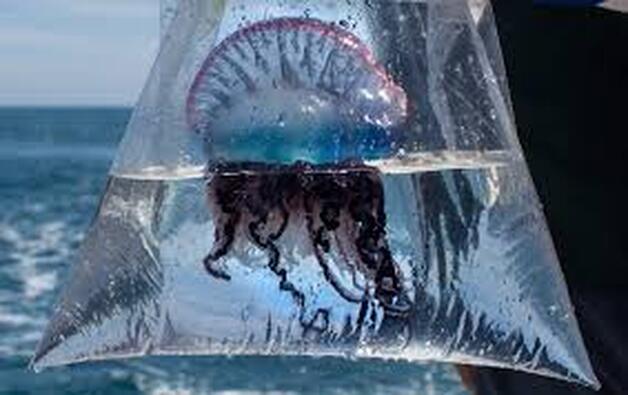
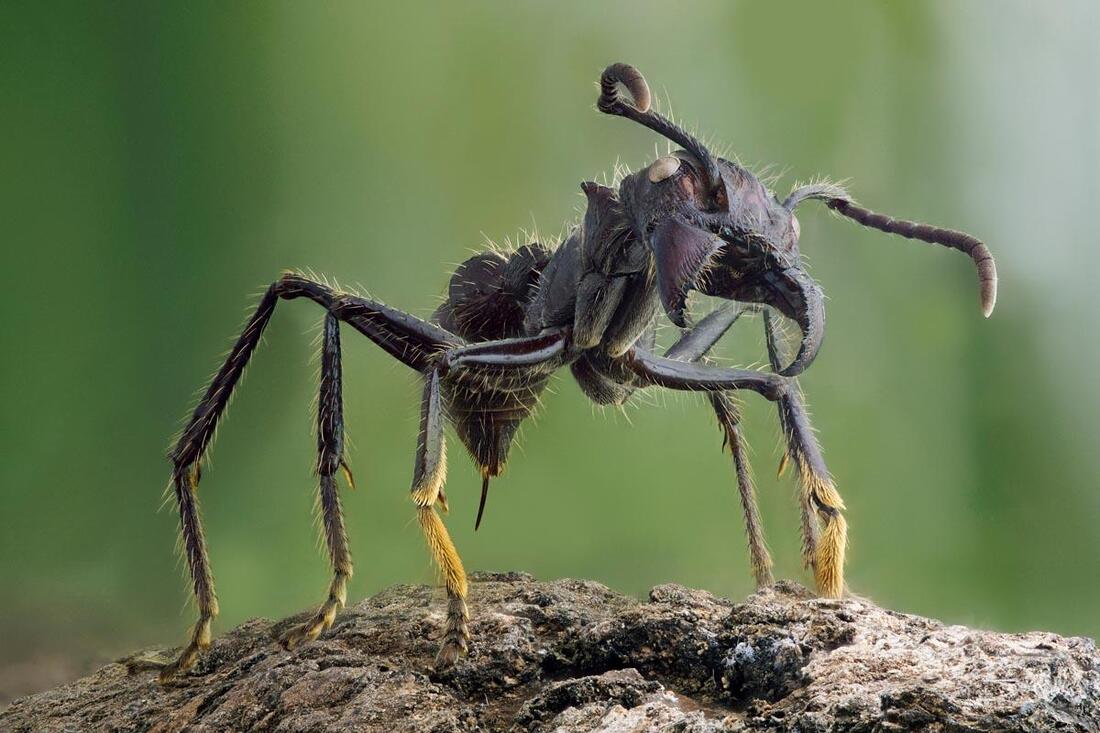
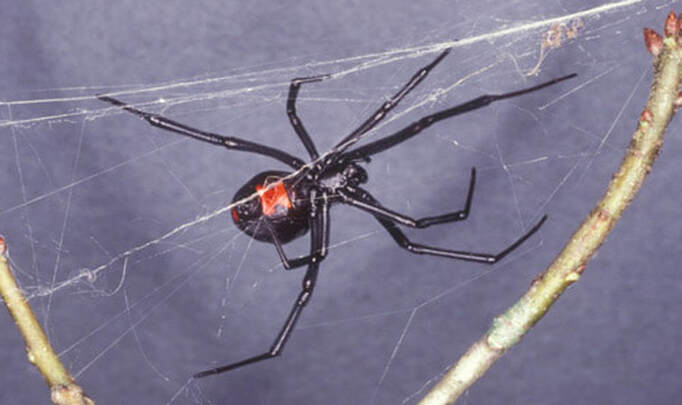
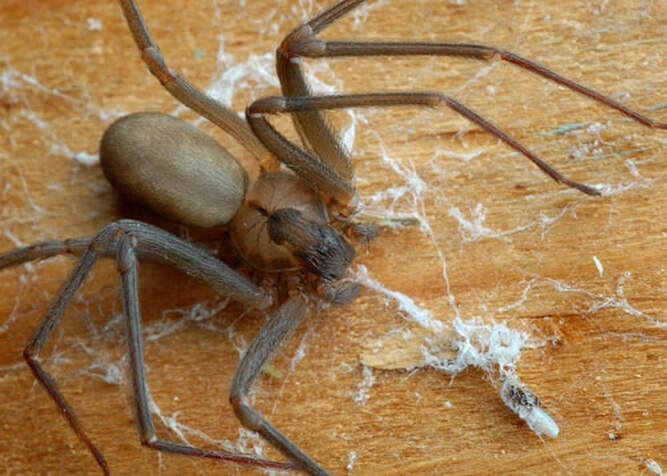
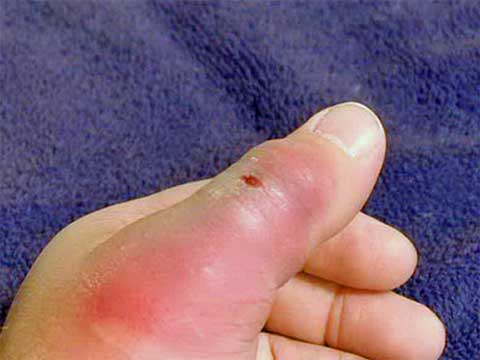
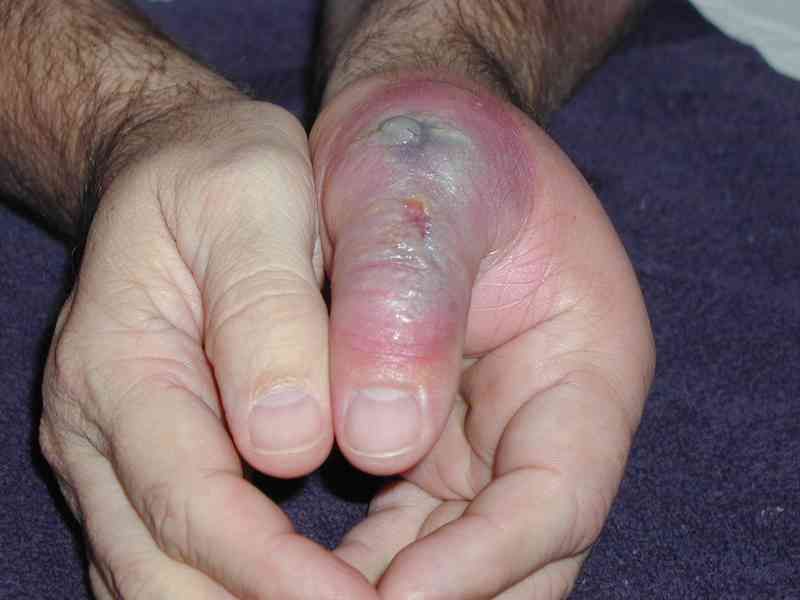
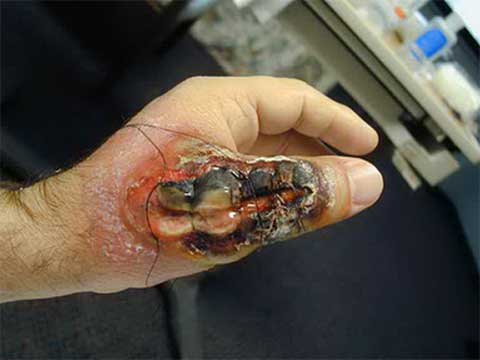
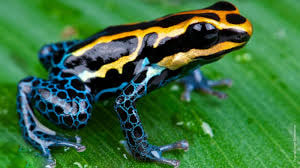
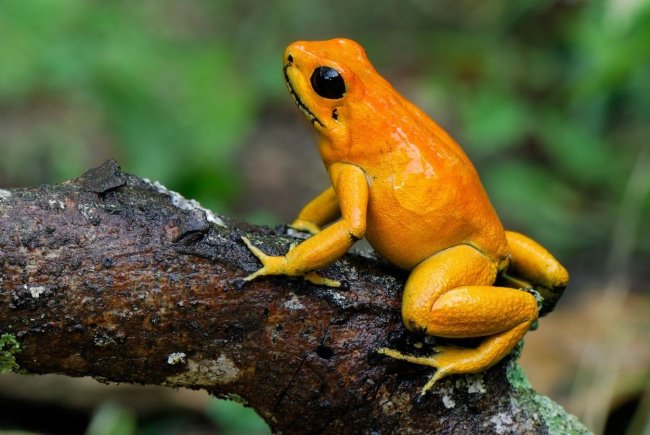
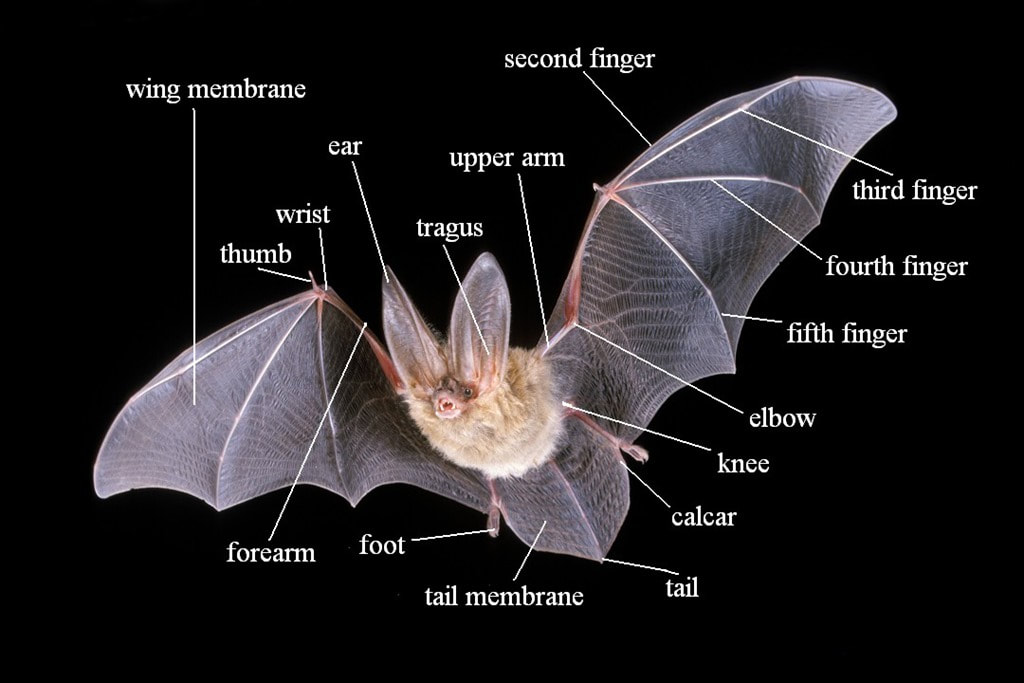
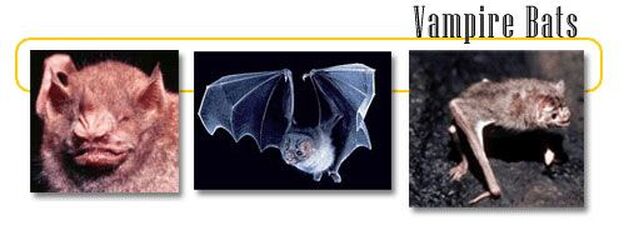
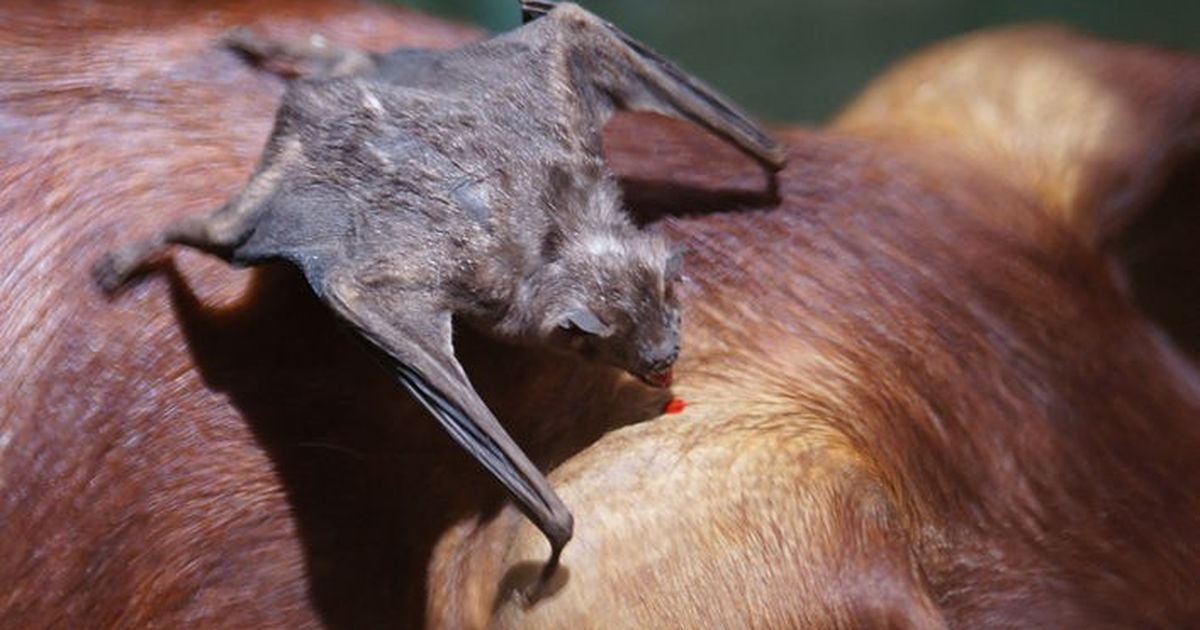
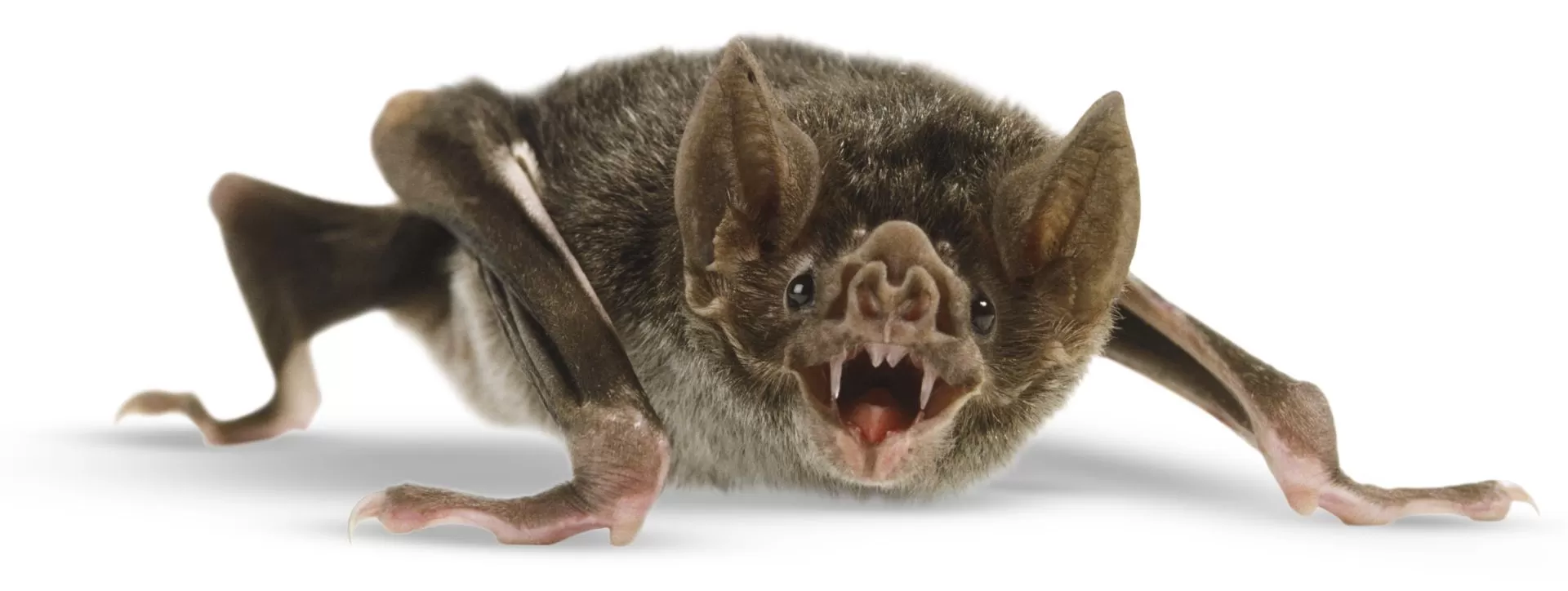
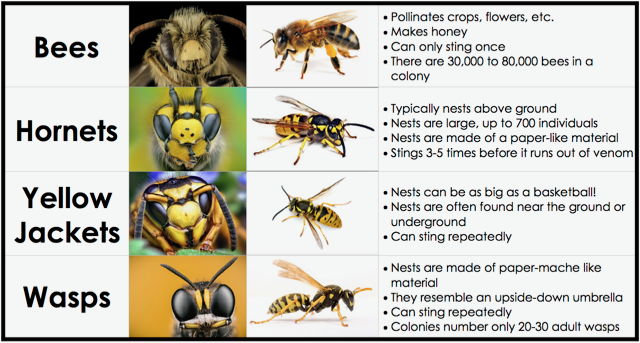
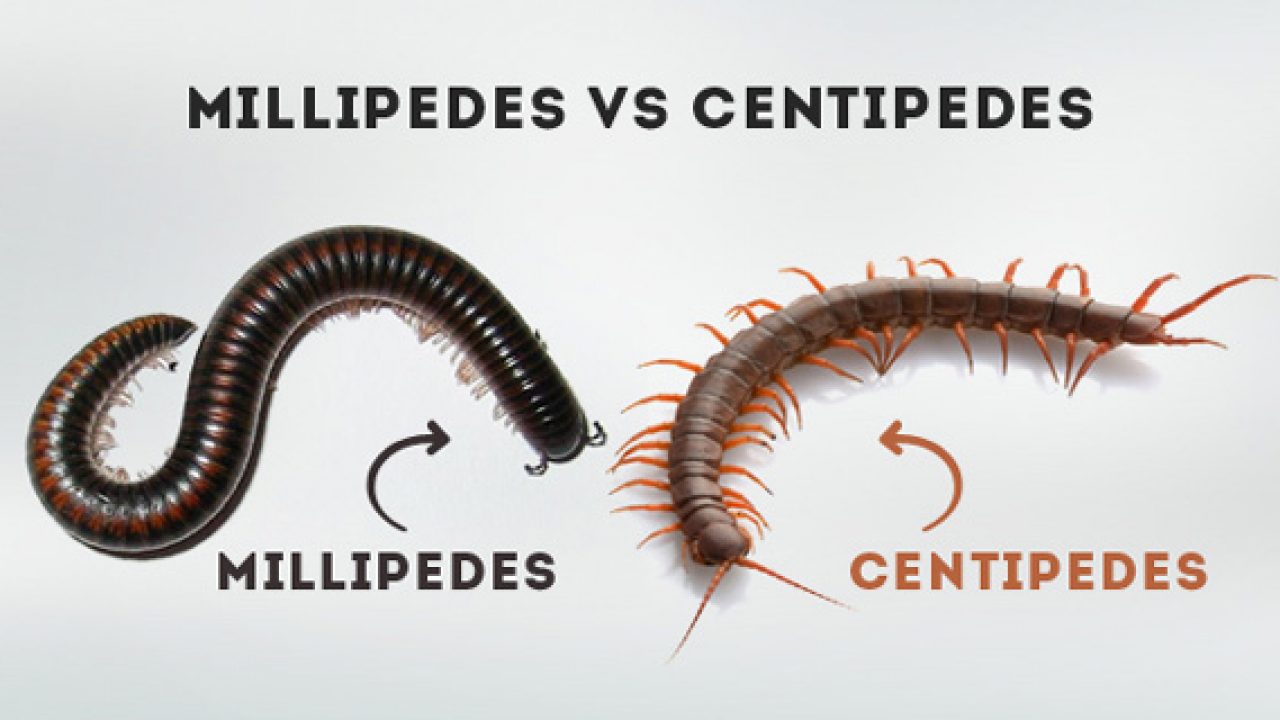
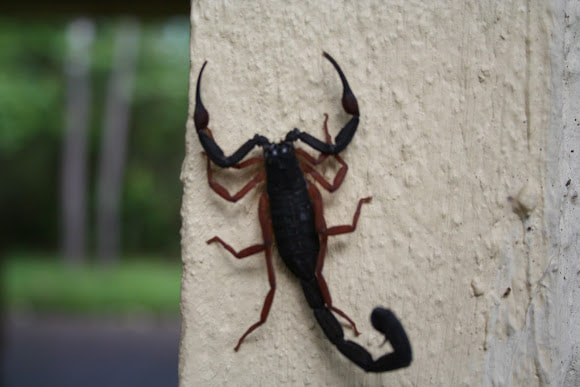
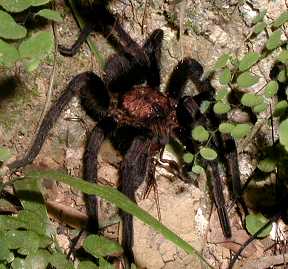
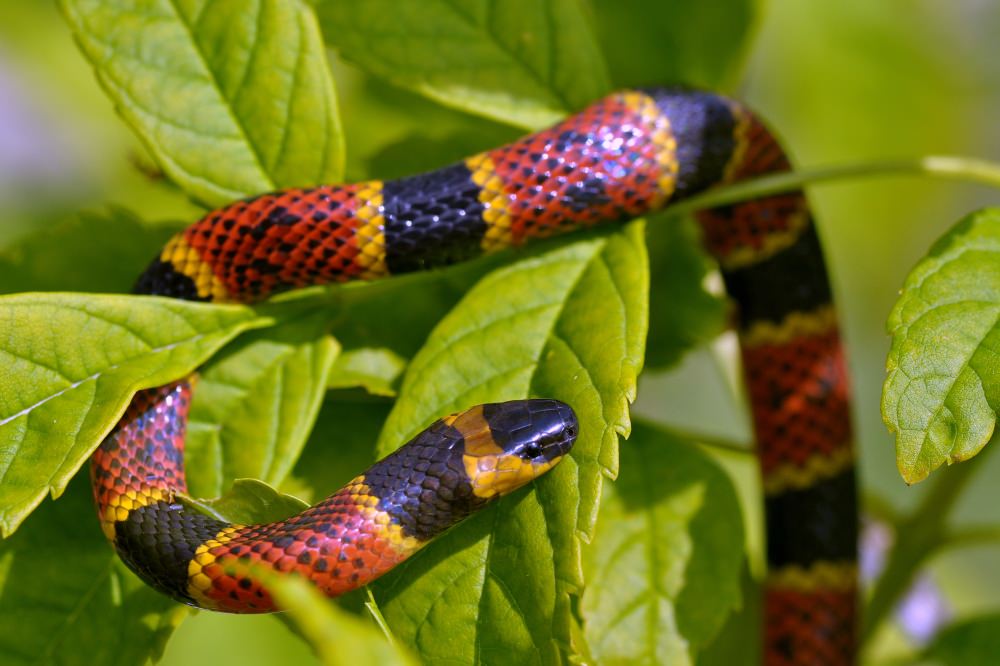
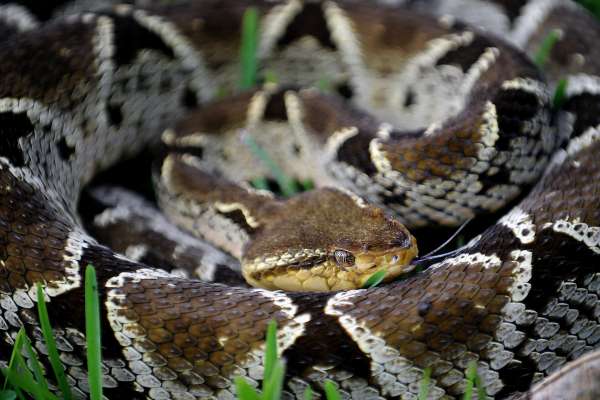
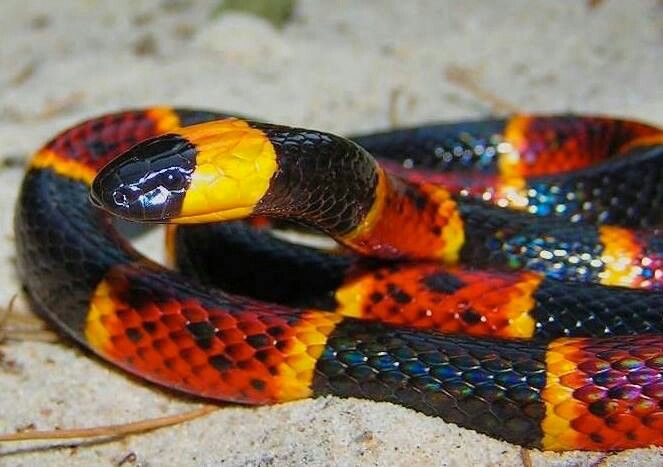
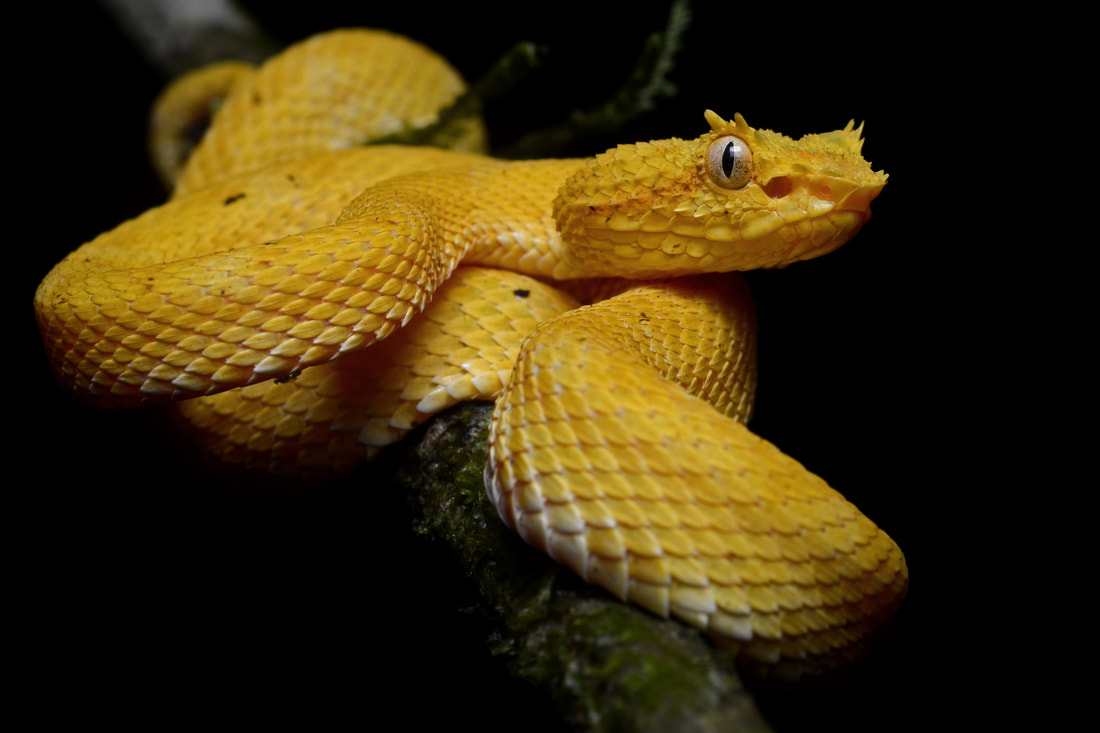
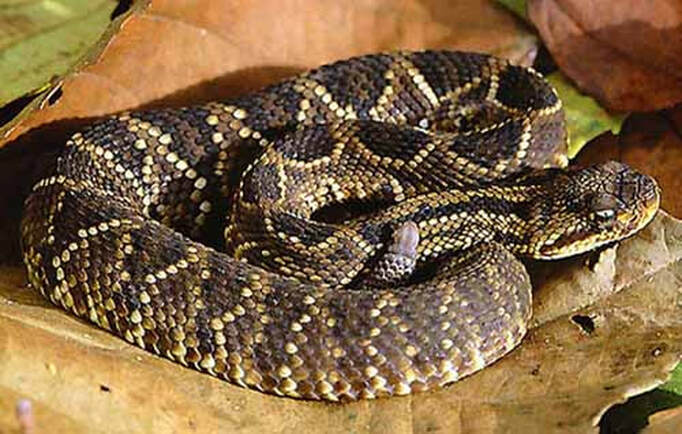
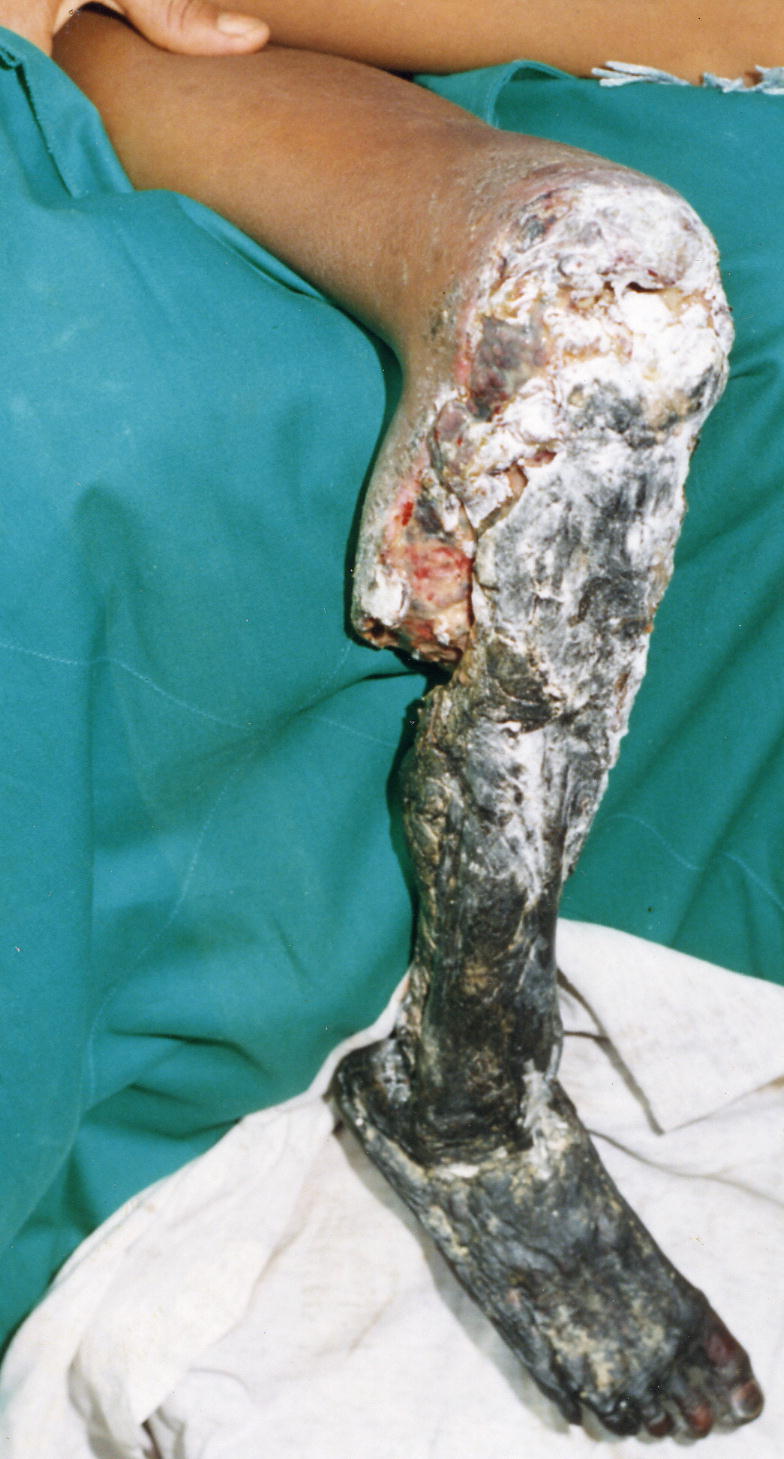
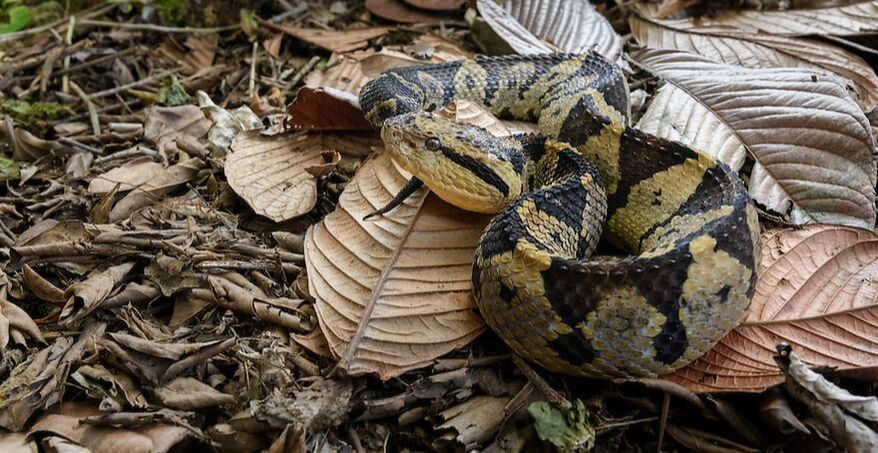
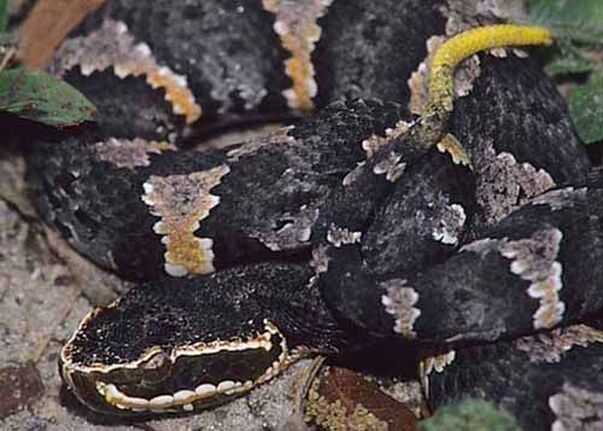
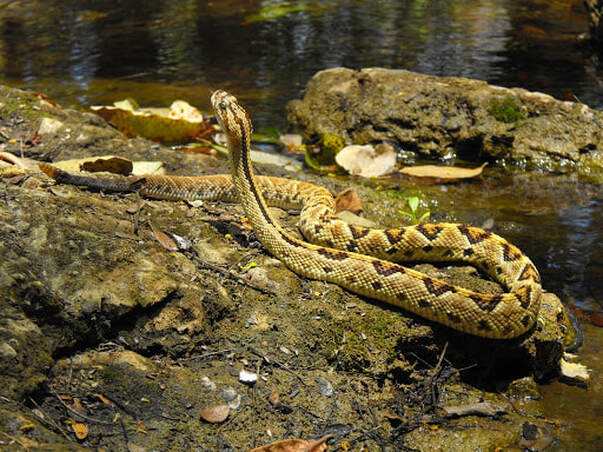
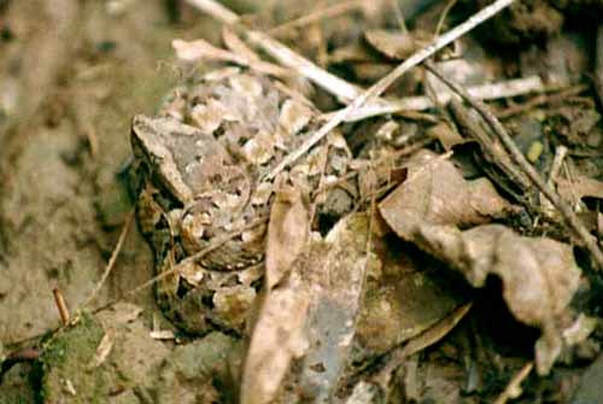

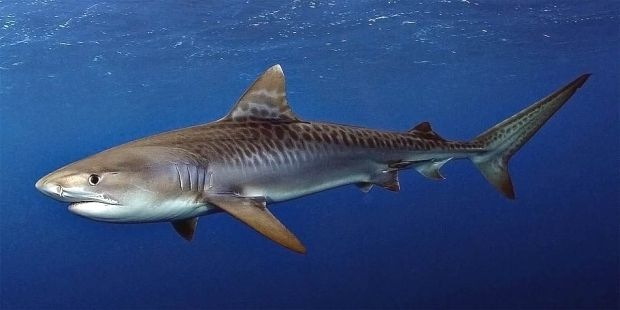
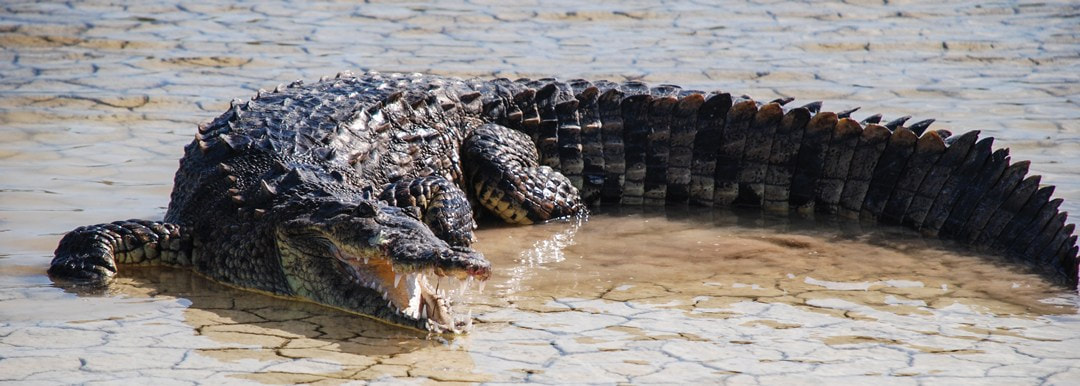
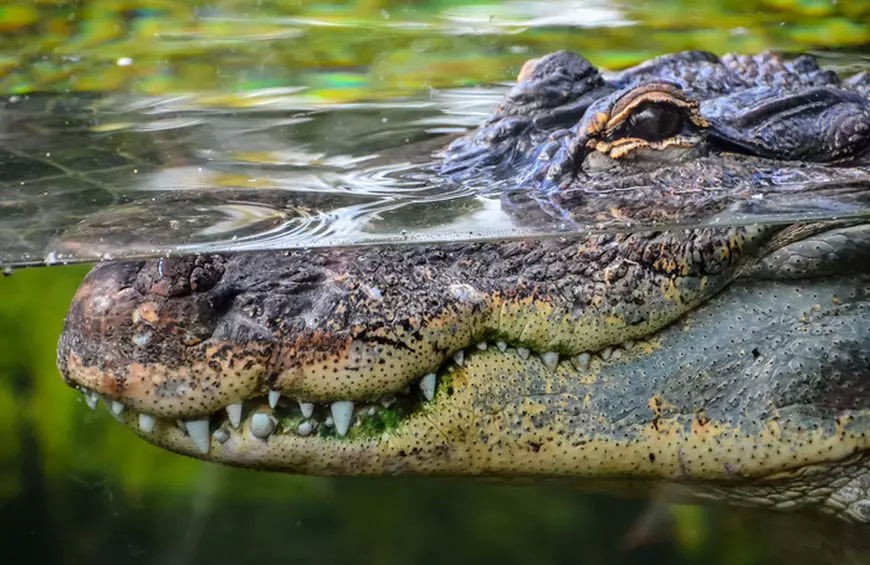

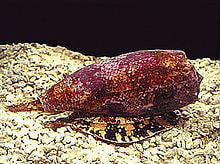
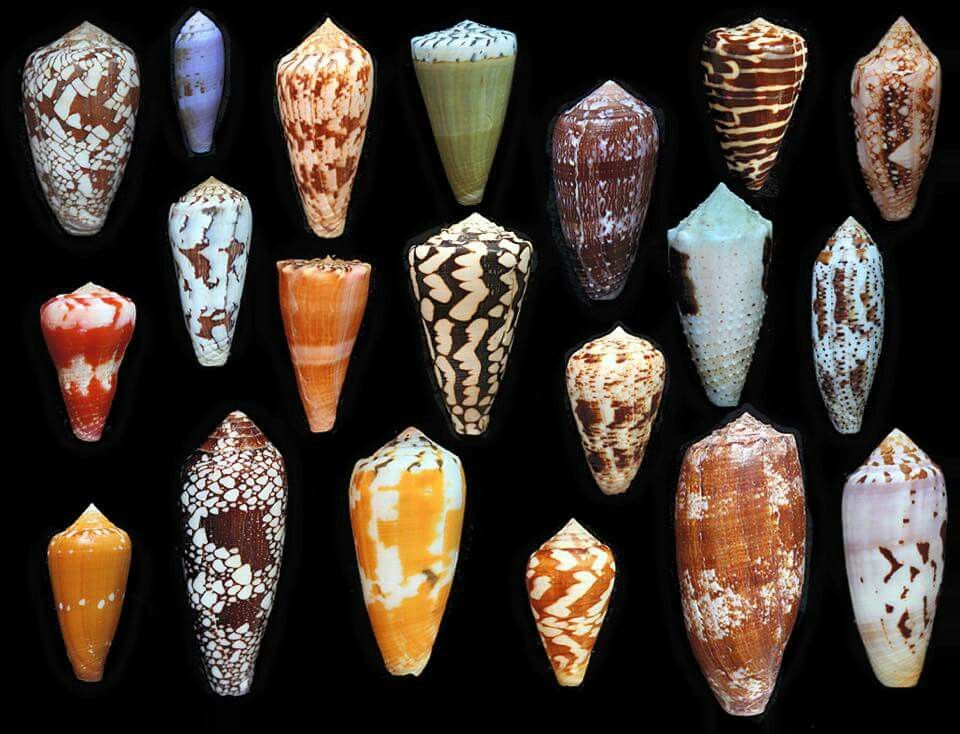
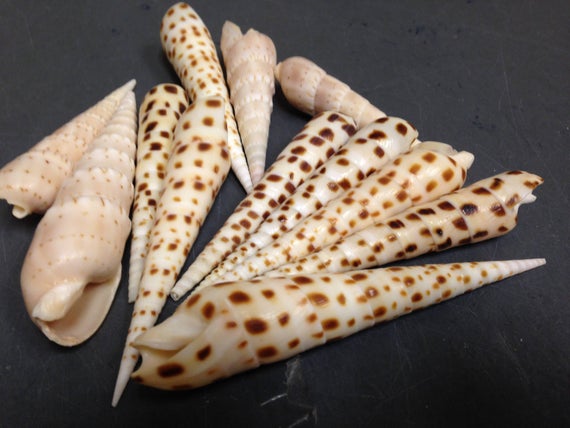
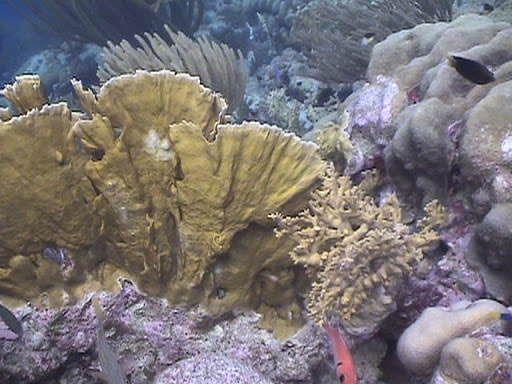
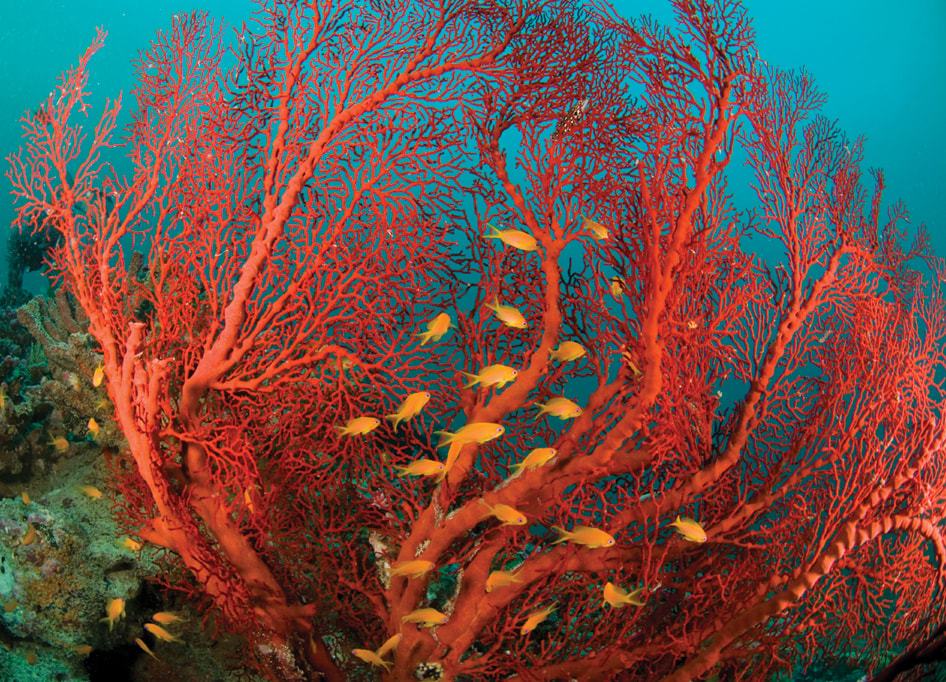
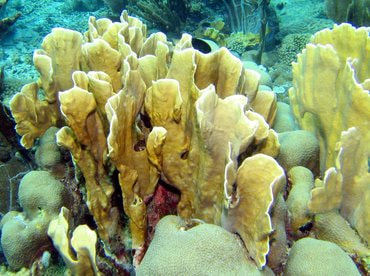
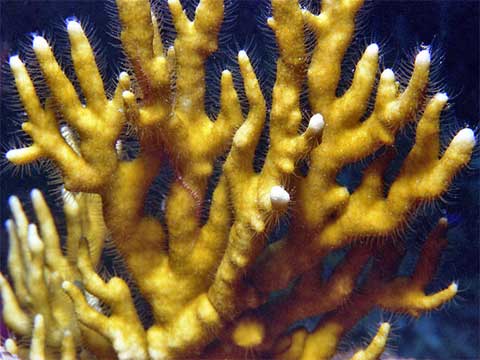
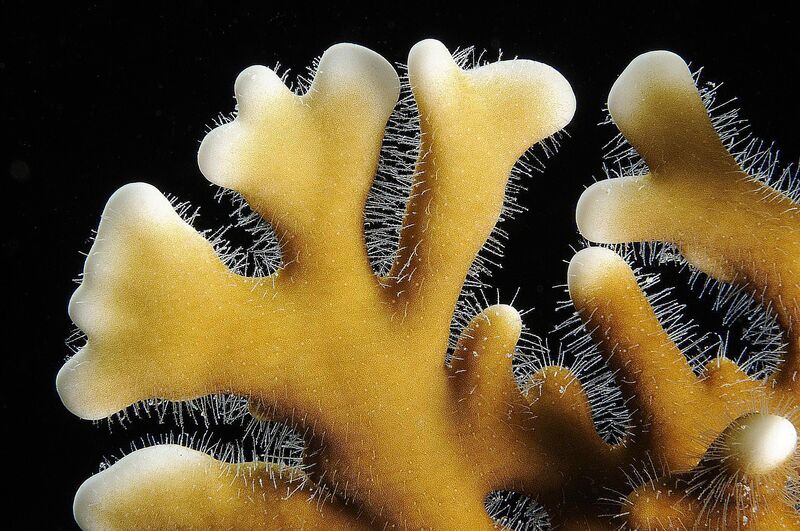
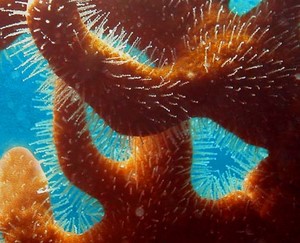
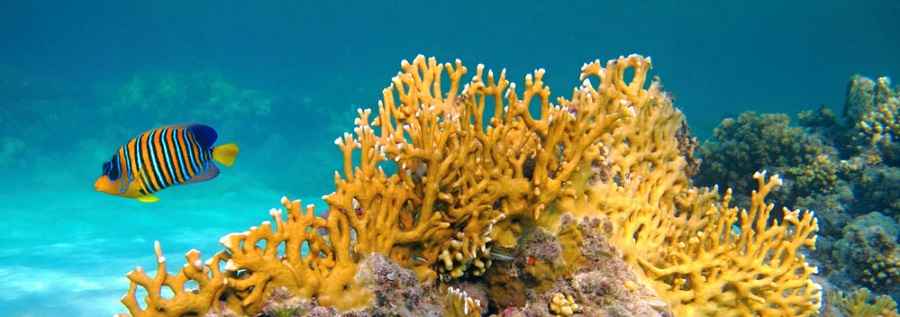
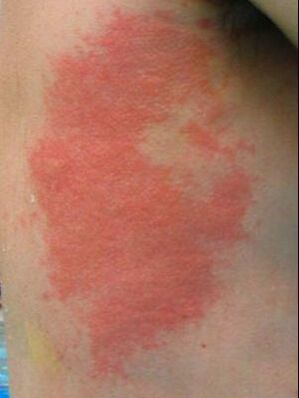
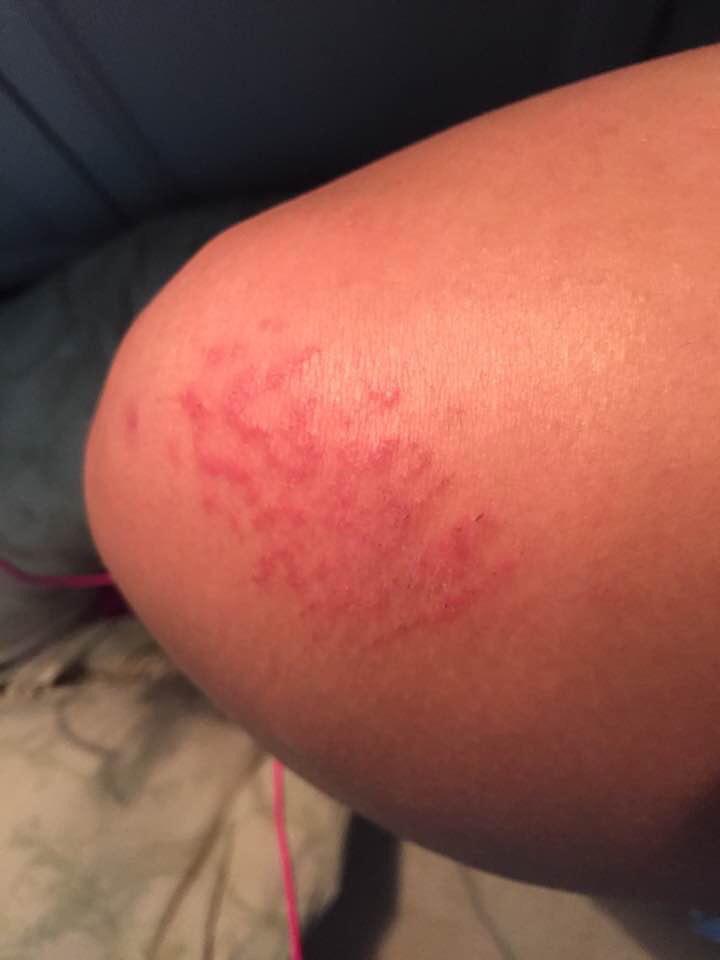
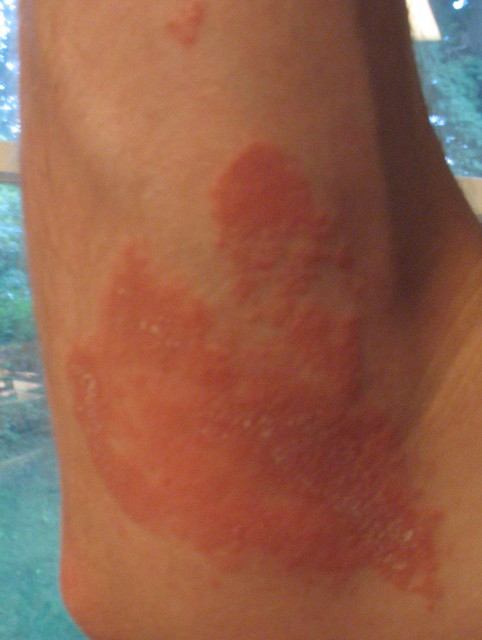
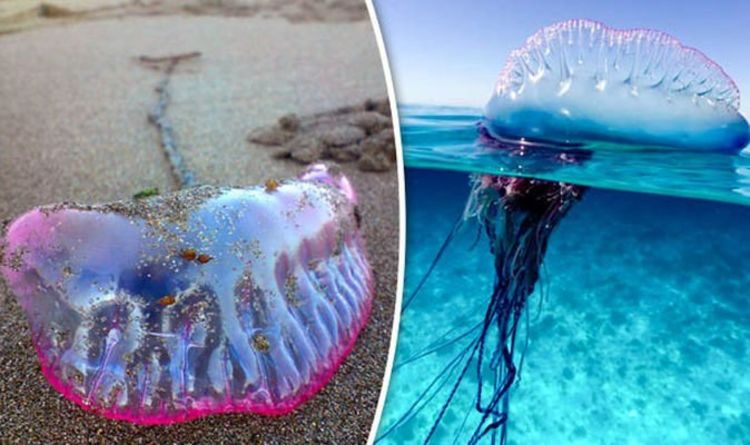
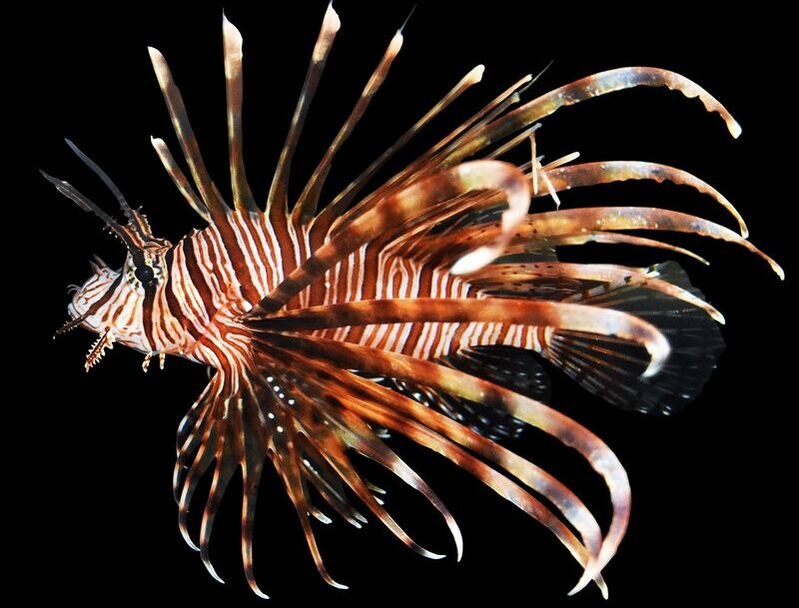
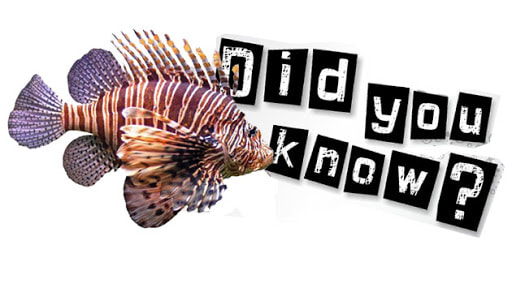
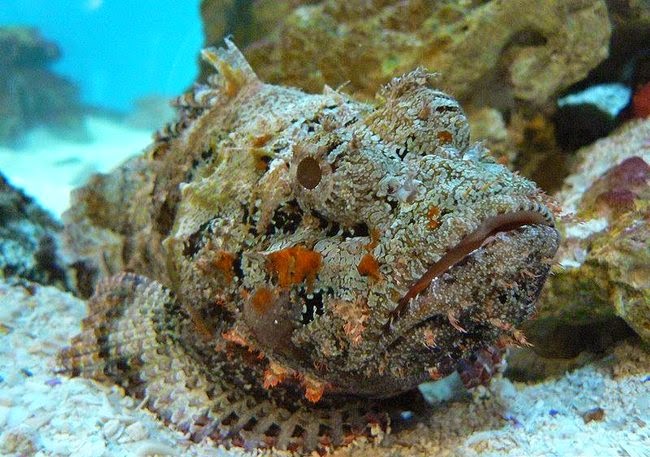
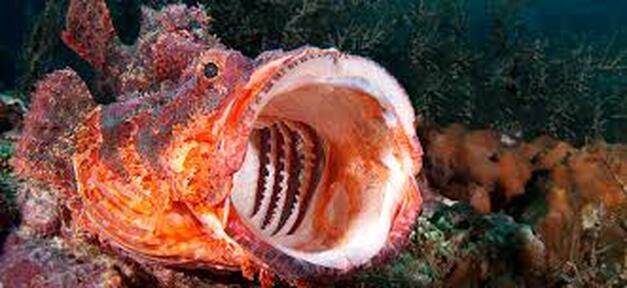
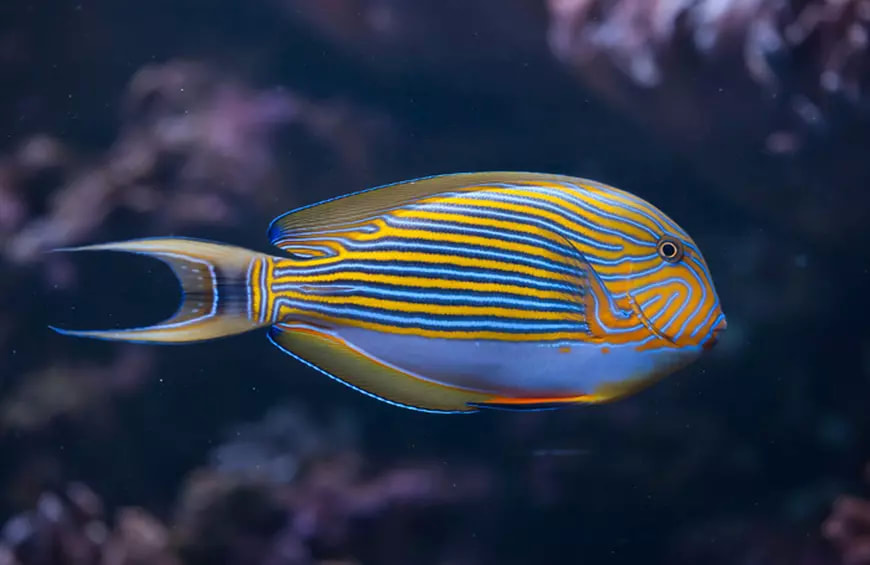
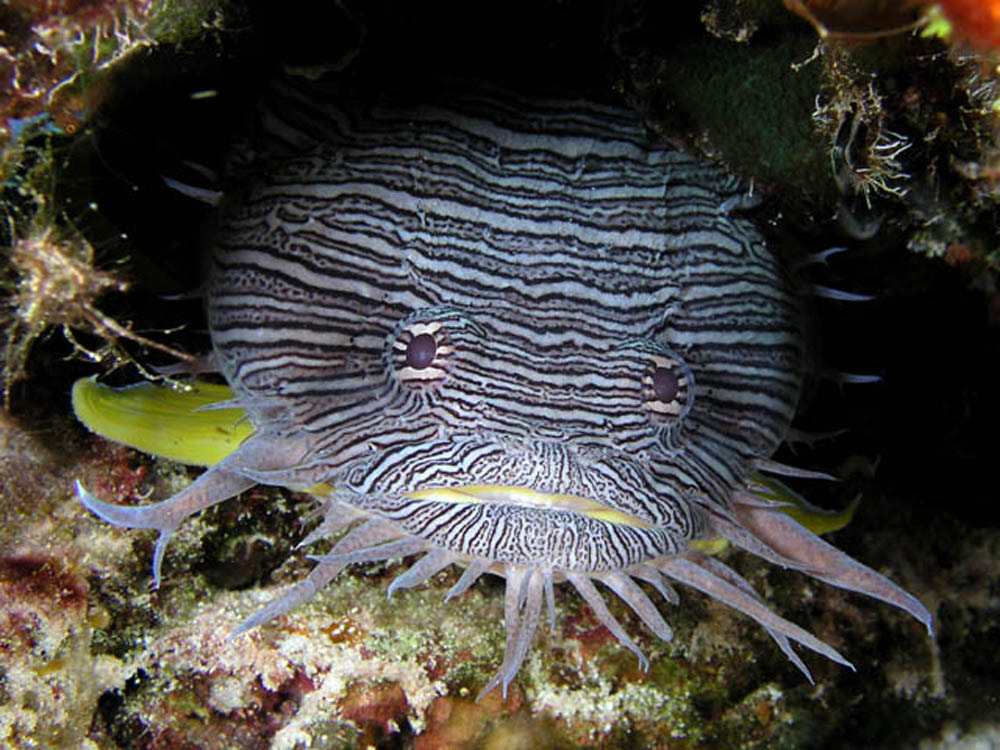
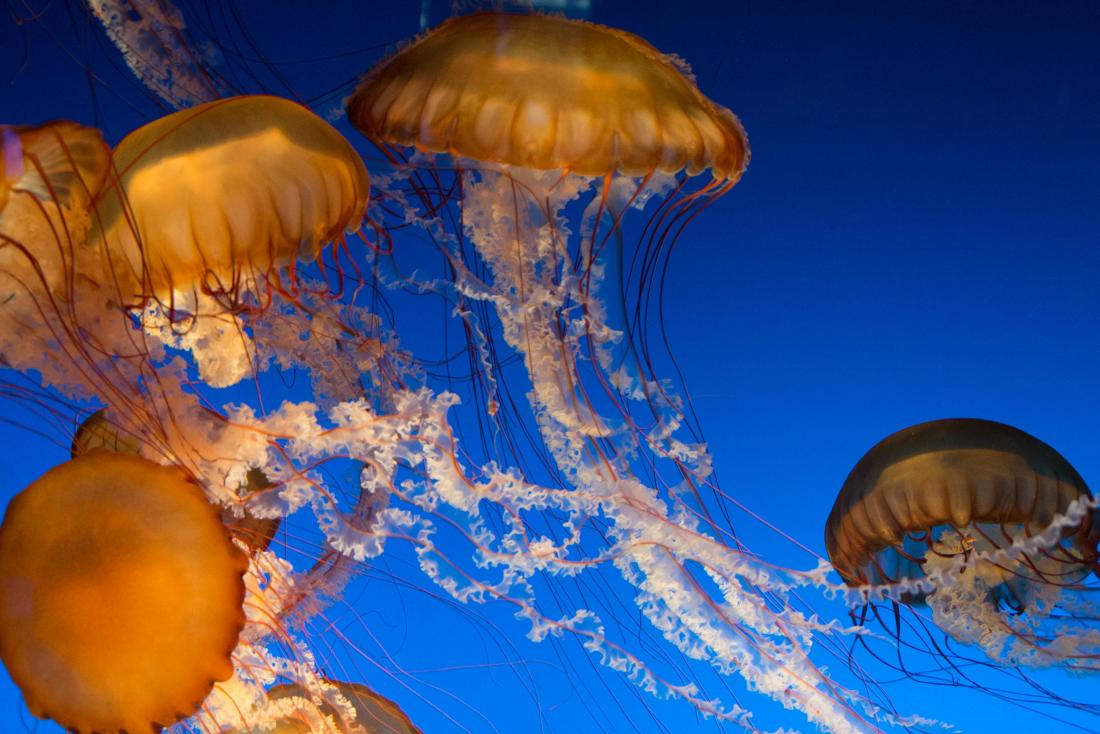
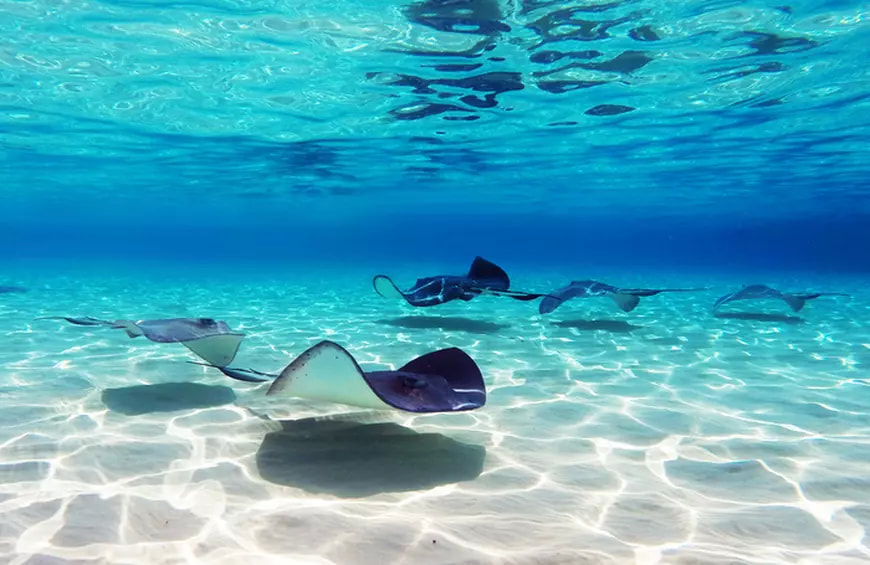

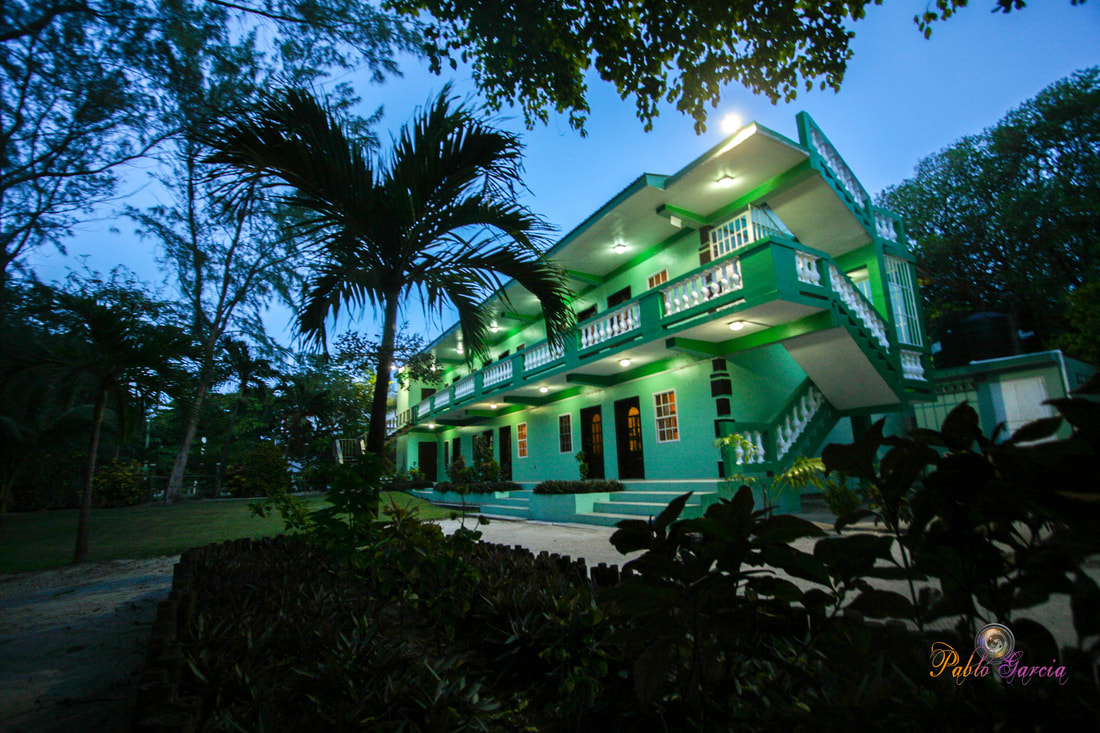
 RSS Feed
RSS Feed




















